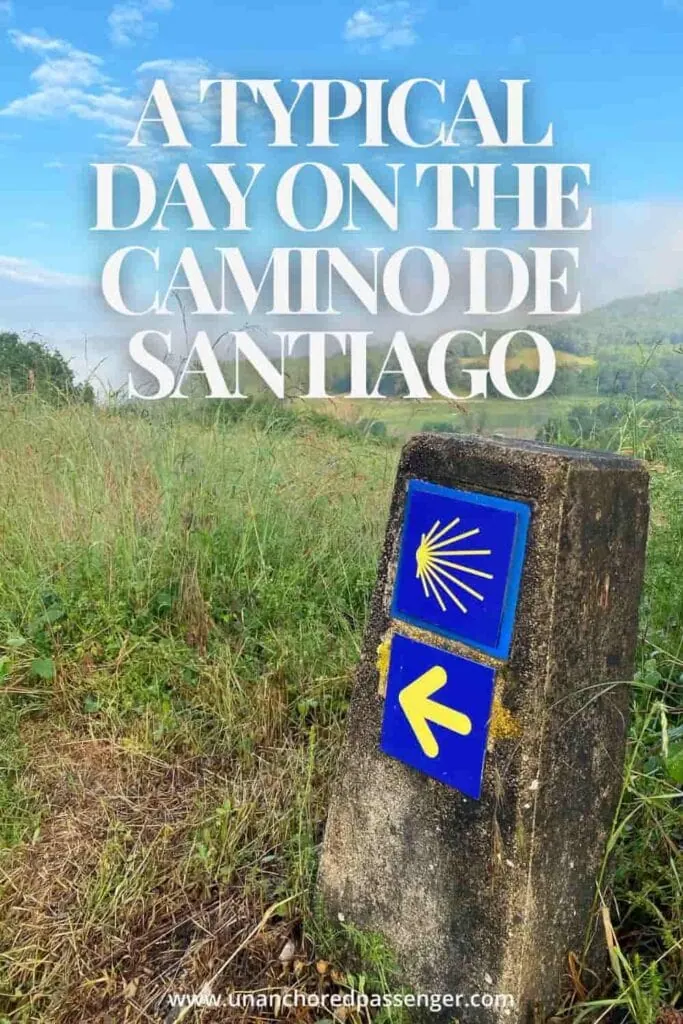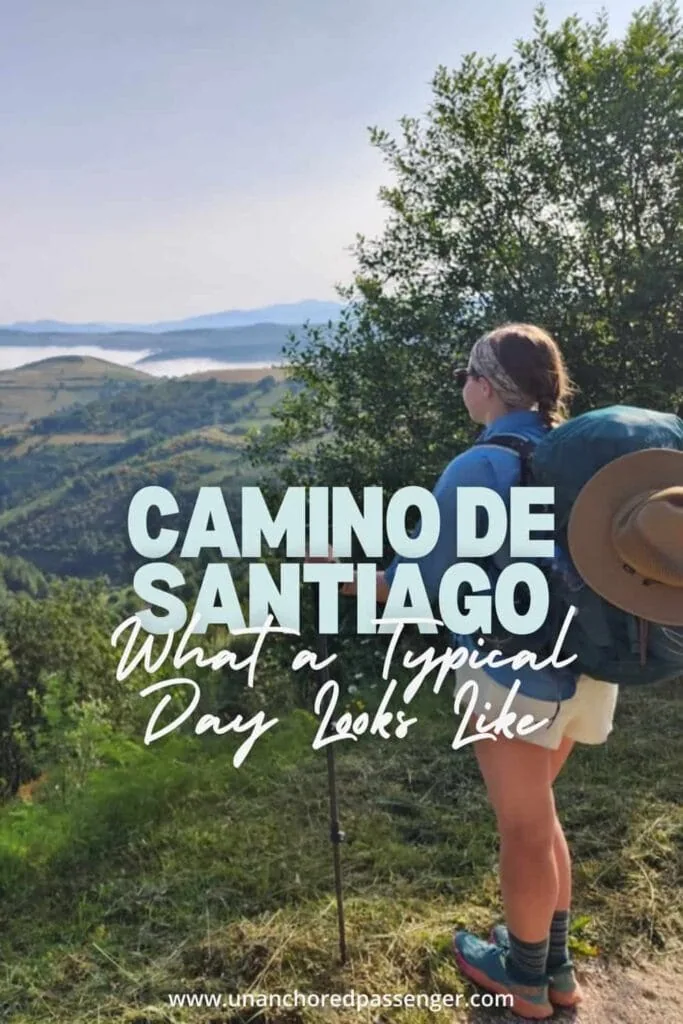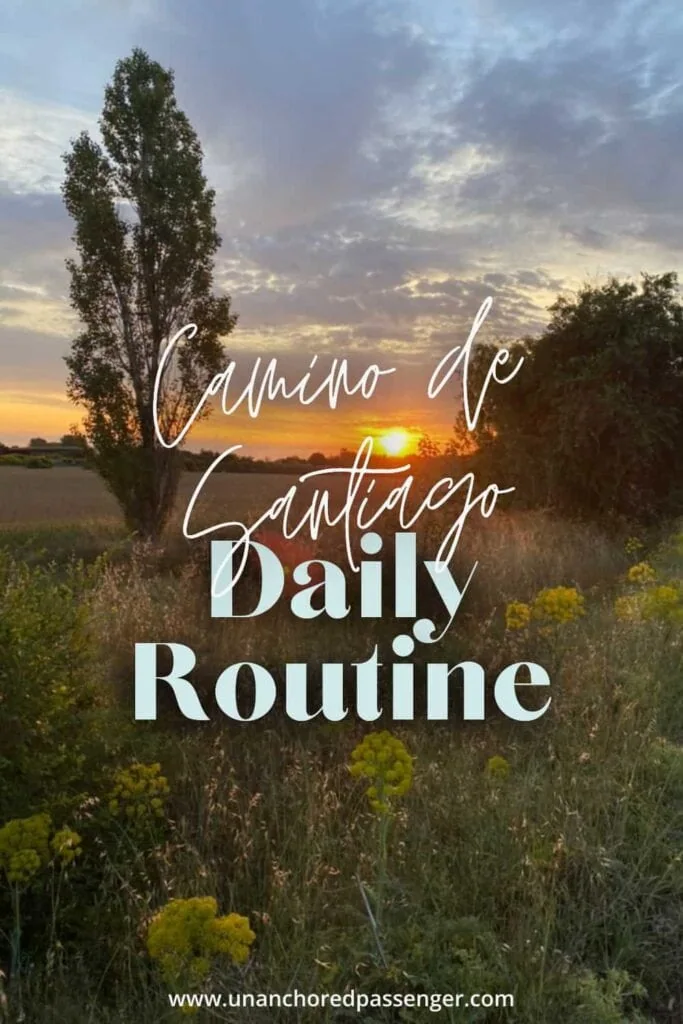A Typical Day on the Camino de Santiago
I spent 33 days hiking almost 500 miles along the Camino Francés last June. In my experience, here’s what a typical day on the Camino looks like.
Of course, a typical day on the Camino may vary slightly depending on your route and preferences.
Every day may also look slightly different depending on the distance you’re walking for the day and how many towns you encounter, but this should give you a general idea.

6 a.m. on the Camino: Wake up and start hiking.
You don't always have to get up this early. I'd say my wakeup times ranged from 5-7:30 a.m. depending on if I had longer or shorter to walk that day and how hot it would be.
The Meseta, the stretch more or less between Burgos and León, tends to be notoriously hot. For that reason, many of us woke up around 5-5:30 a.m. to beat the heat as much as possible during that part of the Camino.
Sometimes people also want to leave earlier if they're worried about finding a place to stay. Personally, I only ran into this issue in Agés.
It primarily seems to be problematic in Sarria onwards where the Camino Francés gets much busier. For Sarria and beyond, I recommend booking albergues a few days in advance and staying off stage, which means staying in towns that are less popular.
Download my Camino Francés itinerary to see everywhere I stayed off stage and more:
In the mornings, I recommend sleeping in your hiking clothes the night before to make getting up (and packing) easier. I typically woke up, brushed my teeth, put my hair in a braid, gathered up my belongings and was out the door around 15-30 minutes later.
Sometimes I’d have a banana and some Príncipe chocolate cookies in my pack so I could eat a little something small for an initial breakfast as I started my Camino hike for the day.

8 a.m. on the Camino: Stop for breakfast.
Whenever I reached the next town, I’d usually stop for breakfast for around 30 minutes. My favorite Spanish breakfast items include:
- Napolitana–this is basically a chocolate croissant.
- Tostada con tomate y aceite–my absolute FAVORITE Spanish breakfast food and a must try. This is toast with a blended tomato spread and olive oil.
- Tortilla de patatas–while not technically a Spanish breakfast food, this quiche-like egg and potato dish can be found at almost every bar in Spain. Sometimes I'd get a slice for breakfast if I wanted a little more energy ahead of a long hike.
- Café con leche–this espresso drink is half espresso half scalded milk. Apparently it's closest to a Café au Lait or Caffè Misto.
- Zumo de naranja–orange juice in Spain is usually made fresh when you order and is truly NEXT LEVEL.
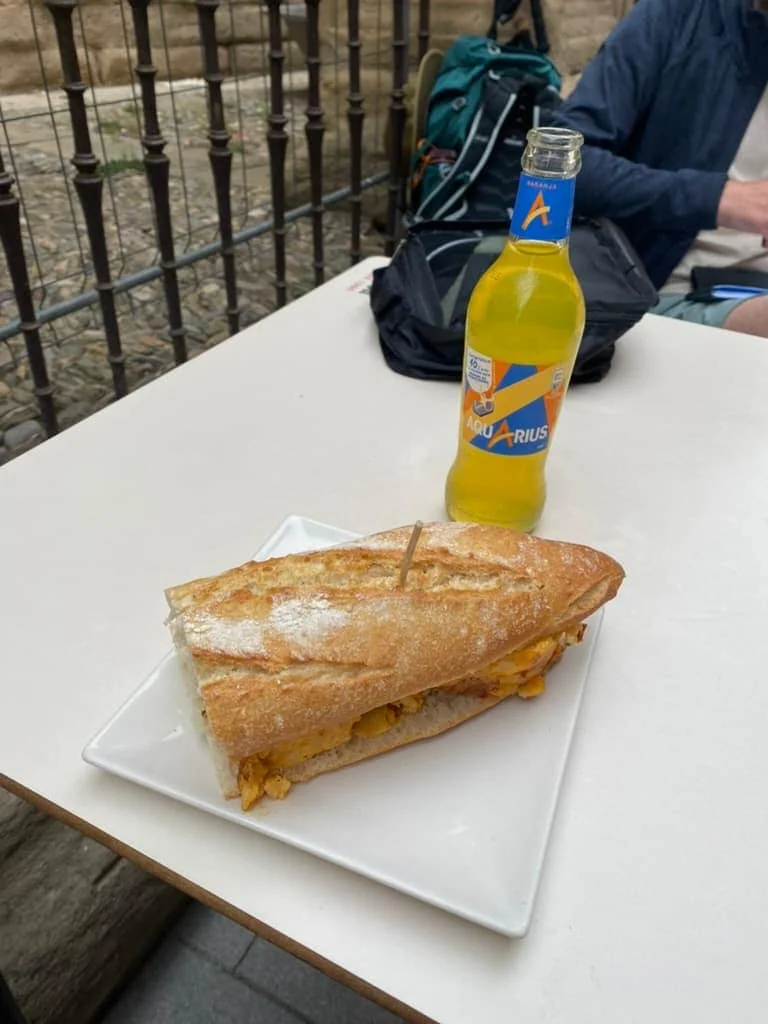
11 a.m. on the Camino: Grab lunch.
After hiking a bit longer, I’d stop and grab lunch. I usually ate a bocadillo (a sandwich) with ham or tortilla de patatas.
If you’re not familiar with tortilla de patatas, think of it like a quiche but without the crust. It’s a delicious egg and potato dish that you can find in just about any bar/restaurant in Spain.
I don't know what it is about Spanish sandwiches, but don't expect to have many options in most places. I found the bocadillos often only have one ingredient.
That said, occasionally you'll be surprised and can get additional toppings, but don't always expect it, especially when you're going through smaller towns.
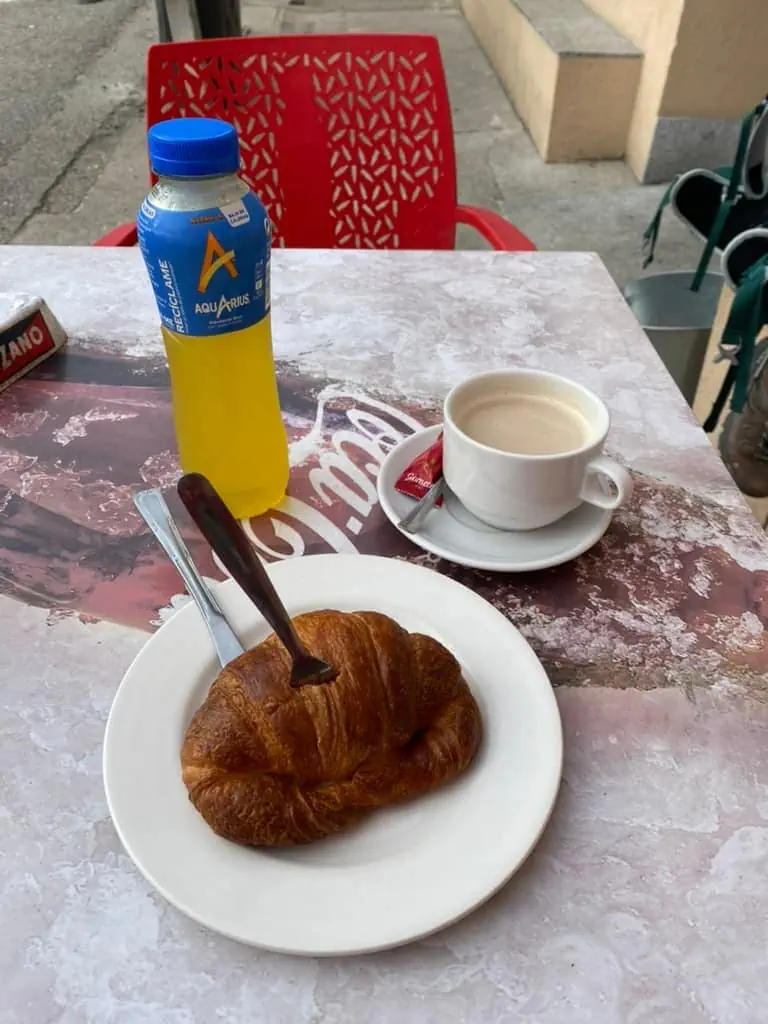
1 p.m. on the Camino: Take an Aquarius break.
It’s important to take care of your body on the Camino, which means taking lots of breaks. You don’t want to make the mistake of rushing through each day.
With that in mind, I’d always take an extra break or two beyond just mealtimes. I often used those breaks to get an Aquarius, the sports drink most commonly found in Spain.

2 p.m. on the Camino: Check into the albergue and rest.
Eventually, I’d make it to my destination for the night, where I’d check in, shower, and hand wash my laundry as quickly as possible so I could climb into bed for a nap.
I often napped for a few hours, but sometimes I would stay in bed for longer to keep resting my body. I brought a Kindle with me and read many books while hiking the Camino (lots of Sarah J. Maas! 👀).
Sometimes if I had time after napping, I would also join my friends for drinks before dinner.
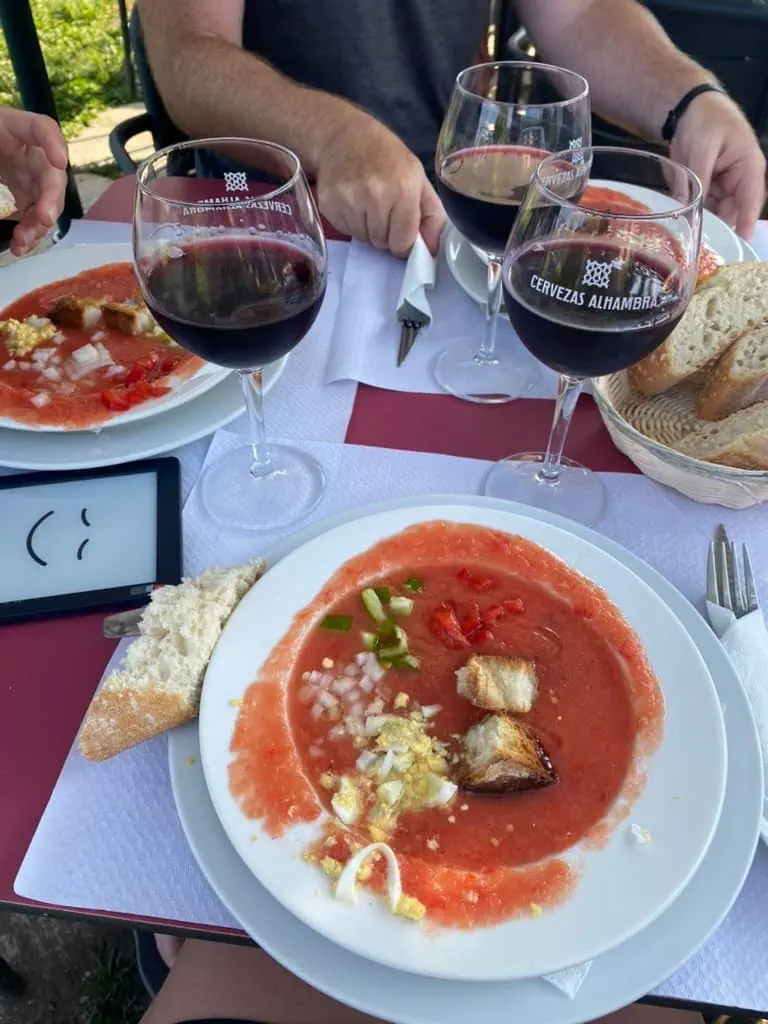
7:30 p.m. on the Camino: Eat dinner.
On a typical day on the Camino, I’d get up and usually try to eat an “early” dinner (early for Spain) either at the albergue or somewhere nearby.
This can be difficult at times since the Spanish typically prefer to eat around 9 p.m. at the earliest. However, many of the towns along the Camino Francés cater to pilgrims and serve dinner earlier than is typical.
On nights when you're in a bigger city, you'll likely have to eat closer to 9 p.m. On those nights, I recommend booking private accommodations that don't have a curfew so you aren't rushing back from dinner.
I made this mistake in Burgos and had to run back to my albergue while my friends paid for dinner.
9 p.m. on the Camino: Get ready for bed.
To end the day, I’d grab my clothes from drying outside, putting them away if dried or hanging them up on my bed to continue drying inside overnight. Nights can sometimes get cold and/or wet. Your clothes have a better chance of finishing drying inside with the body heat of everyone sleeping.
Then I’d brush my teeth, get ready for bed, and read my book for a little bit to wind down. I’d set my alarm and go to bed early so I could be ready for another long day of hiking the next day.
There you have it! That’s what a typical day on the Camino looks like.
